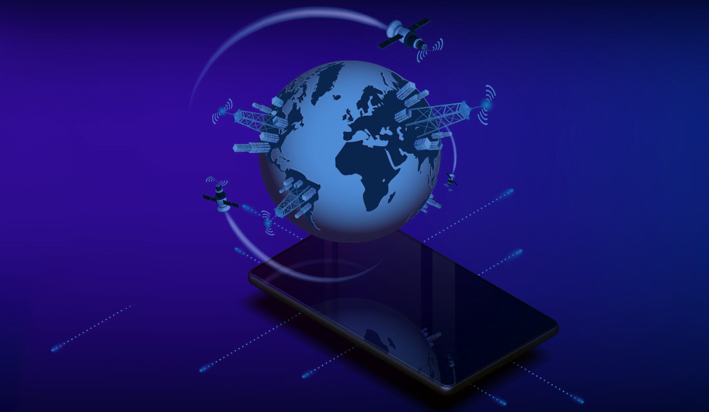Rapid advancements in tech and the widespread adoption of the internet, increasing by the hour, have made TELECOM sound like a chapter from a legacy textbook. If you agree with this statement, it’s probably why there’s an impending need to understand the telecom sector better.
To put it in simple terms, the telecom sector is made up of companies that enable communication on a global level, irrespective of the medium through which it is achieved. These companies have successfully built the infrastructure to allow data in the form of words, audio, and video, which can be shipped to any corner of the world.
This sector appeals to both growth- and income-oriented investors, embracing the internet to turn the traditional market upside down with mobile services. Thus operating and scaling a business in this sector is a golden opportunity for anyone.
Still, think of telecom as a legacy contender? Well, think again!
Telecom also plays a crucial role in society, supporting five important cores on both professional and personal levels:
- Governance
- Relationships
- Healthcare
- Education
- Environment
The global telecom market is expected to grow from $2,642.14 Billion in 2021 to $2,866.61 Billion in 2022 at a compound annual growth rate (CAGR) of 8.5%. The growth is mainly due to the companies rearranging their operations and recovering from the COVID-19 impact, which had earlier led to restrictive containment measures involving social distancing, remote working, and the closure of commercial activities that resulted in operational challenges. The market is expected to reach $3,818.36 Billion in 2026 at a CAGR of 7.4%. (Source: ReportLinker)
Like all the years passed, the telecom industry, in 2022, is bound to face new opportunities and hurdles presented by ever-evolving regulatory, technological, and competitive drivers.
Let’s dive into the most significant existing and emerging trends that are reshaping the telecommunications industry.
Competitive Broadband Markets
Mobile and wireless connectivity make a viable alternative to wired communication systems. The wireless format presents new opportunities for businesses to bundle their service offerings when coupled with faster bandwidths. The end result is more flexibility to the consumers which in turn leads to the markets becoming more competitive and dynamic. This naturally creates a more competitive environment for broadband players, who will be forced to offer higher bandwidths at a competitive price. All this is to maintain optimum retention of customers who belong to the younger generations, as they belong to the majority who’re increasingly migrating to wireless networks.
Decentralised Infrastructure
Telecommunication infrastructure and services have traditionally been managed at the federal level. However, decisions like the $1 Trillion Infrastructure Investment and Jobs Act (IIJA) passed in November 2021 earmark $65 Billion for continued broadband adoption and deployment, allowing fund flow through a more decentralised state-based approach. This, in some sense, enables free movement in research, innovation, and deployment. It’s not 100% decentralisation, but it’s definitely a hike up the hill.
Edge Computing & Private Cellular Networks
The enterprise market for private cellular networks and edge computing is still nascent but promises to be competitive. Network operators will have to compete against other suppliers, who may prove key partners in delivering their solutions. It is to be noted that the supplier ecosystem operating under this business model is currently undefined and fluid. However, things are expected to solidify over the coming months. This is a stellar trend and an even more stellar opportunity for businesses to ride the wave.
The 5G Era
5G adoption is happening at a swift pace. 5G has also given app and tech developers new opportunities to design new layers that can leverage its speed and provide seamless utility to users. However, it also creates new security concerns and challenges that operators must address. This creates an all-new security service lineup that operators can offer enterprises that wish to deploy their own advanced wireless network.
Definitive Forms of IoT
IoT technology adoption is one of the brightest shining stars in the horizon of emerging trends, as several manufacturing and transportation services companies allied with the telecom market are gearing up to ride the wave. The allyship arises because IoT is a network of physical objects such as devices and vehicles, which are embedded with software, sensors and network connectivity to help collect and exchange data.
All things considered, innovation and evolution in technology are inevitable. Every year brings new trends upon the horizon, and it is every business’s responsibility to be future-ready. This is not just about incorporating new technology into a business. It’s about adapting to change and disrupting almost everything that forms your enterprise. Get in touch with us to know how your business can walk the talk.
Nevertheless, telecom is here to stay, and so is our digital transformation tech that will allow it to prevail for many more decades.






